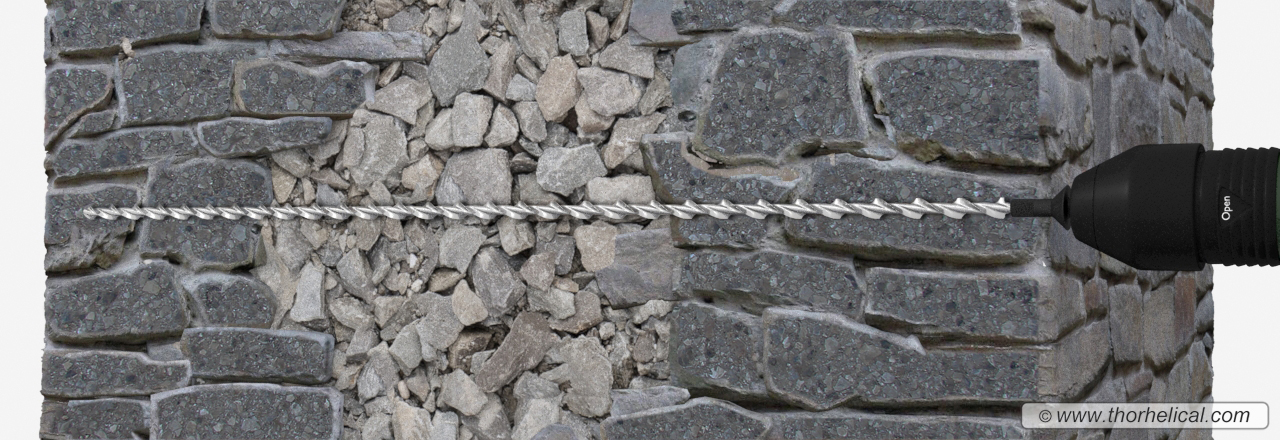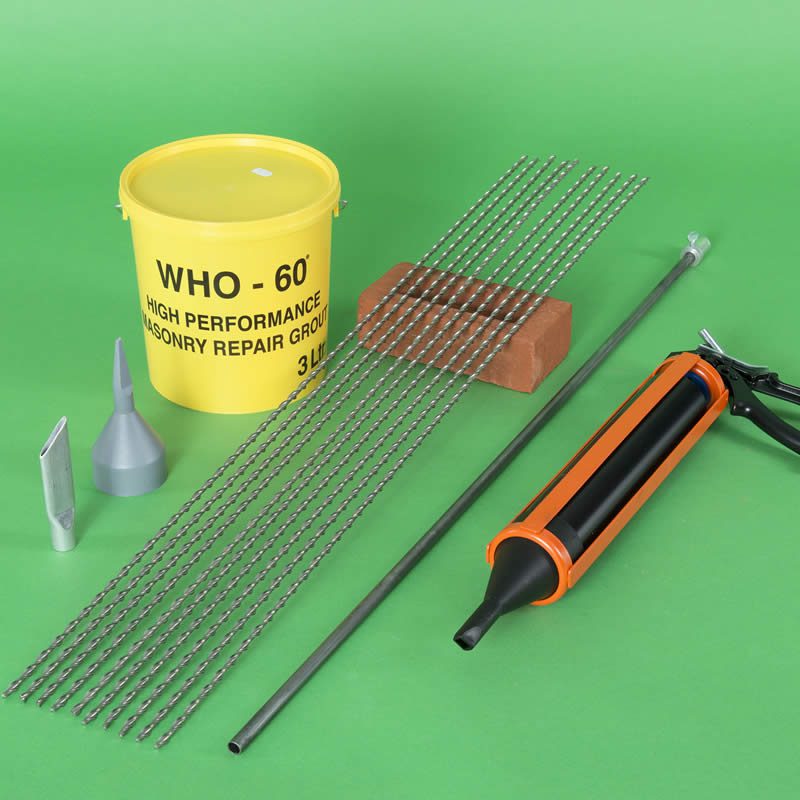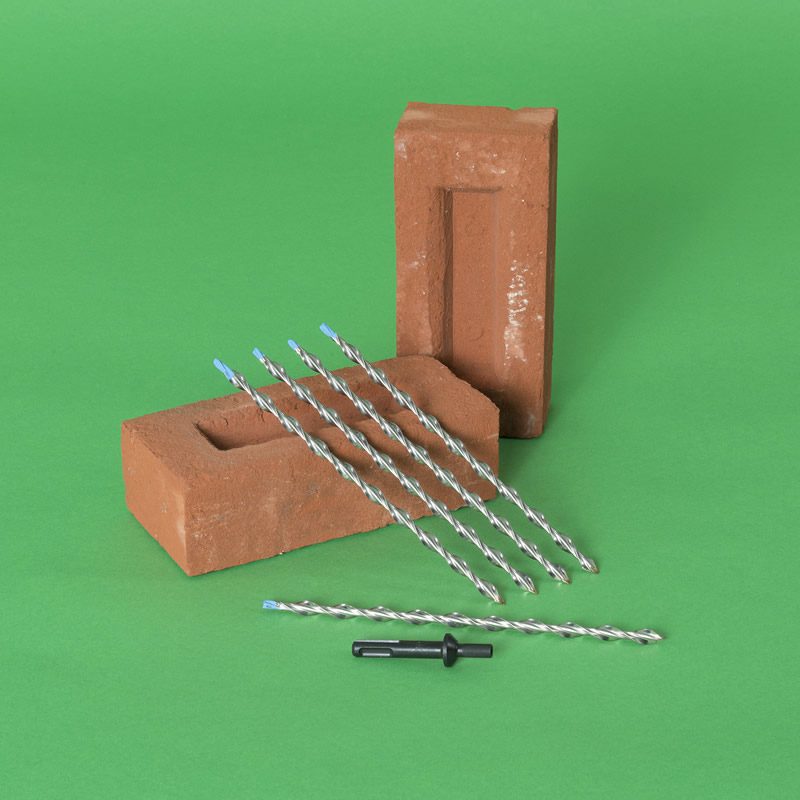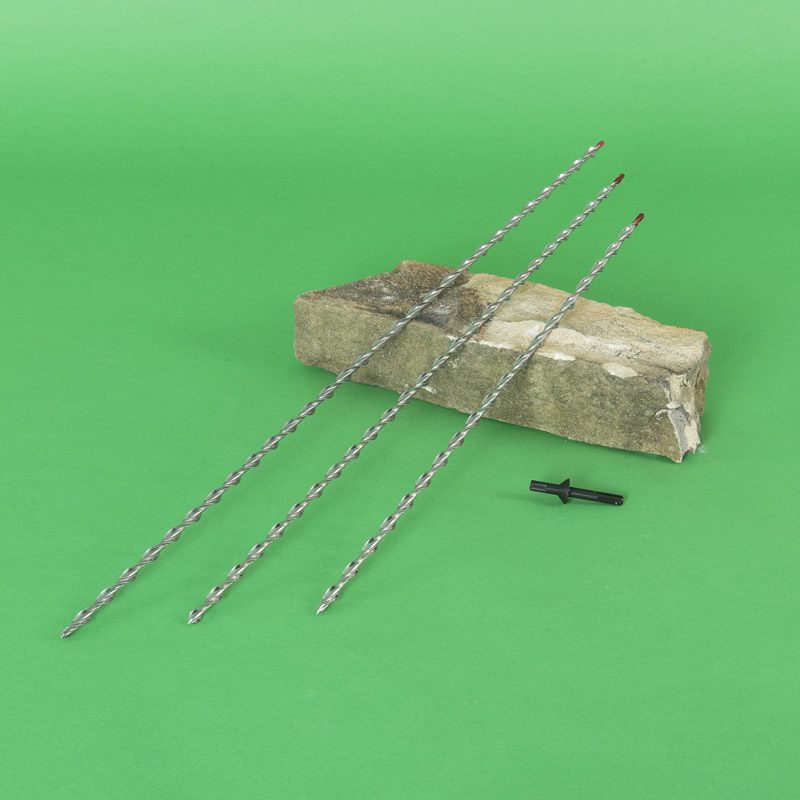
Thor Helical ties are beneficial for tying rubble-filled walls. The twisted wall tie bars connect the inner and outer layers of old stone walls when the core is designedly full of rubble or other infills.
Old rubble-filled walls sometimes develop defects that appear as bows or bulges in one or both leaves. Common causes of such defects are; rainwater penetration, repetitive cycles of freezing and thawing and settlement of the infill. The mechanism for this is that the water penetration washes the fine material out of the core infill over the years, allowing the heavier loose infill to drop down the wall. The residue build-up causes areas of localised pressure, resulting in bulging as excess infill forces the walls apart.
There are two methods of re-tying rubble-filled walls. The first is method utilises a bonded connection, and the other relies on a mechanical connection to secure inner and outer layers of stonework.
Tying Rubble Filled Walls with Cement-Bonded Tie Bars
The bonded method requires drilling a large hole from one side of the wall, across the rubble infill and into the remote wall. The walls are thoroughly wetted to limit suction, and polymer-modified cement-based grout is injected via a long nozzle to fill the bore in each stone before winding the bar into the unset grout. Once cured, the bar is bonded to both stone layers creating a tension tie strap that provides resilience against further bulging pressures.
Sometimes, there are difficulties installing bonding ties. It is often the case that settlement of the infill blocks insertion of wetting or grout-injection nozzles, the blockages hindering grout-injection in the remote leaf. Other limitations of this method include material incompatibility issues in old buildings and using a cement grout in cold temperatures.
Tying Rubble Filled Walls with Mechanical Fix Ties
The mechanical method of tying thick rubble-filled walls requires a small and discrete pilot hole extending from the near-side wall, across the rubble infill, and into the hidden wall layer. Using an SDS drill’s hammer action with an SDS setting tool, a heavy-duty twin-start helical tie is driven into the walls to provide an undercut connection in each layer.
The corkscrew action of the mechanical helical ties allows it to wind through any loose infill. With no chemicals, this technique of securing old rubble-filled stone walls overcomes using dissimilar materials and eliminates installation limitations in cold climates.


